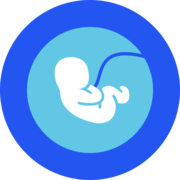
Marc Joseph Kalan, MD
Hey there, Your concern about hydrosalpinx is valid. We know that they can decrease success of IVF. For that reason, the removal of your right tube wa... (read more)
There is really no minimum or maximum estrogen and progesterone. Most clinics will want the former to be above 150 and the latter 10 but it will vary based on the route (oral, patch, vagina) that you are taking your medication. Most clinics like the lining to be 7mm or greater. For women with a history of thin lining a 6 may be adequate.

Based on some limited data, I use: Pentoxifylline ER 400mg 1 tab by mouth twice a day Vitamin E 1,000mg by mouth once a day

It is thought to be a disruption of decidual vessels at the maternal-fetal interface. To the best of my knowledge, there is not a known cause.

It's another way to synchornize follicles for stimulation start and I often use it for poor responder patients.

PGD stands for Preimplantation Genetic Diagnosis and is indicated for couples that both partners are carriers of the same genetic disease, such as Cystic Fibrosis, Thalassemia, etc. There are over 6000 genetic diseases but provided the mutation (the genetic defect) has been previously identified PGD can be used to select the IVF generated embryos that are not affected by the disease. PGS stands for Preimplantation Genetic Screening , and refers to the selection of embryos generated through IVF that have the correct number of chromosomes. Couples going through IVF produce several embryos many of them have chromosome abnormalities. Chromosome abnormalities result in the embryo not implanting or in miscarriage, and these abnormalities increase with the age of the woman, from about 30% abnormal embryos in young women to over 80% in women 42. However, once a normal embryo is selected they implant equally well at any age (up to age 42).

Most implantation failure (30-80% depending on maternal age) is due to chromosome abnormalities and thus PGS is recommended to identify the embryos with normal chromosomes and highest chance of implanting. In the best fertility centers the transfer of PGS normal (euploid) embryos results in 60-70% of them implanting. The 30-40% that do not is attributed to many factors each with a small impact on overall divers rate. Two that have been recently identified are: - Uterine receptivity: the uterus is on average more receptive to embryos implanting 4-6 days after progesterone shot, but some have this window of implantation shifted to day 3 (pre-receptive) or to day 7 (post-receptive). If the embryo is transferred on day 5 post progesterone the embryo may not implant if the woman is pre- or post-receptive. This occurs in about 10% of women with implantation failure. There are tests for uterine receptivity (ERA, ERgrade, ...) that can identify when is the best time for your embryos to be transferred. - Mitochondria: these are organelles within the egg that generate energy. We recently have shown that too many mitochondria in a PGS normal embryo indicated that the embryo may not implant. This occurs in about 10% or less of normal embryos. The test is called MitoGrade.

Patients with PCOS have a greater risk of having insulin resistance leading to type II diabetes. High insulin levels can cause darkening of the skin and it is termed acanthosis nigricans.

Some studies showing acupuncture prior to and after transfer can improve pregnancy rates with a certain protocol. Some studies showing no difference. I typically recommend it if it helps the patients relax and like them to try it out prior to the transfer time. A whole goods diet high in omega 3 fatty acids can't hurt! Not one diet however that is known to be best. I recommend my patients continue their same exercise regimen but that they do not increase it.

Likely! But we can never know until we perform the ultrasound.

A mosaic embryo is one that was shown to have two or more different cell lines within the biopsied sample - some normal (euploid) and some abnormal (aneuploid). While mosaic embryos do implant, they do so at a rate half of a fully euploid embryo and tend to also miscarry more often. Proper counseling should always take place before transfer of such embryos. Amniocentesis can be performed on ongoing pregnancies from mosaic embryos.




























